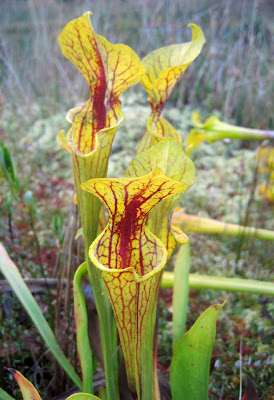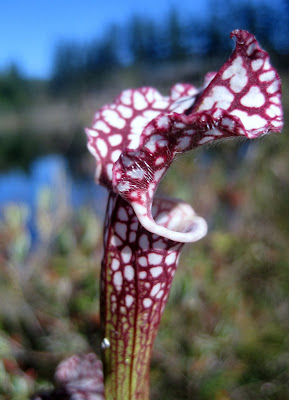
The facility is beautiful and blends into the environment. The original education center was a house moved to the property years ago. The new buildings hang on the hill and there are walkways and viewing towers.


Filed with light and wood, the floor was stunning.










When Lake Washington was lowered as a result of digging the Ship canal, several native habitats were lost. Sloughs and marshes were waters from the creeks and streams ran into the river were lost and diverted. The whole Black River, which connected the Cedar to the Duwamish disappeared. The Cedar was channeled through a canal to the lake. The Mercer Slough is being protected as an important habitat for plants fish and wildlife. It is also the location of the settlement Sah tsu khal.
There has been historic settlements on these waterways for thousands of years. The Duwamish people inhabited settlements at the slough all along Lake Washington, Lake Union and the Black River and the Duwamish rivers. The clan was powerful, controlling commerce and transport of goods coming in from over the mountain. Chief Seattle was a member then leader of this tribe. Duwamish means "People of the Inside"
Much of the culture was centered on the use of both fresh water and salt water resources. The Lake People used the resources of Lake Washington , Lake Sammamish and the large rivers. Canoes of different types were made. Small canoes were used to maneuver in the calm waters and rivers, handy for getting into low water marshes. Larger salt water craft were for rougher waters and the long distance travel across and north and south along Puget Sound.
Tom Speer began the presentation with a welcome dance and song from the youth group and many member adults joined in. He then told the story of Little Silver Salmon.

Now is the time for this story since Silver Salmon go upstream when the Big-leaf Maple leaves fall. Here is an image of part of the story in Lushootseed and English. Tom told the story in both languages.


There was discussion of the use of cattail reeds for weaving. These mats formed the walls within the longhouses which were homes for extended multi-family groups. During the summer the population would become more mobile. They moved throughout the region working the land for harvesting and trade. Their houses were portable pole structures with the reed mats serving as walls and ceiling.
Mary Lou Slaughter was present and she demonstrated her craft of weaving and clothing production. Cattails are harvested in the late Summer and early Fall. Fine reed ends were stripped and formed into twine. The reeds are woven in a familiar fashion to make baskets.

The mats are made with a technique that is more like sewing. The reeds are laid long ways and a long wood needle was used to pierce through the reeds. D"Ann , an apprentice weaver demonstrated.


A cord was drawn though to bind the reeds together. A grooved mat presser, which matches the dowel, presses the reeds to prevent ripping.

Mary Lou is holding a bundle of reed twine she had worked on. Notice her shirt and the caption. Lushootseed for cattail, it is today's title.

Bark and abalone hat






Mary Lou was working on this Reed Vest

This shows you the needle part way along, the traditional double headed reed presser and the previous row and cording.

There were other items presented. I loved the cod fish lure. It is about eight inches long.

The little graphic shows how it works. Pushed down into the depths and let go, the whirling lure catches the fishes attention and draws it upward.

You can learn more here http://www.duwamishtribe.org/ about the tribes history and their current struggle to gain recognition.
Here you will find information on the Lushootseed language. Not having the proper program to type the font used in this language , our title today is the best I can do to write "cattail" in Lushootseed language.

































